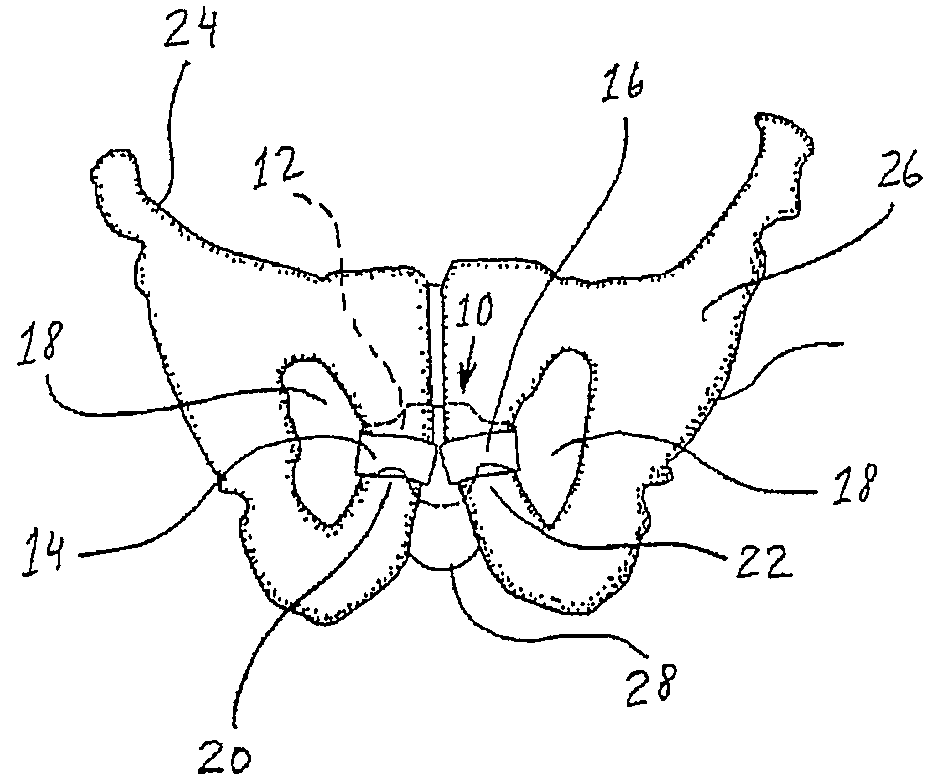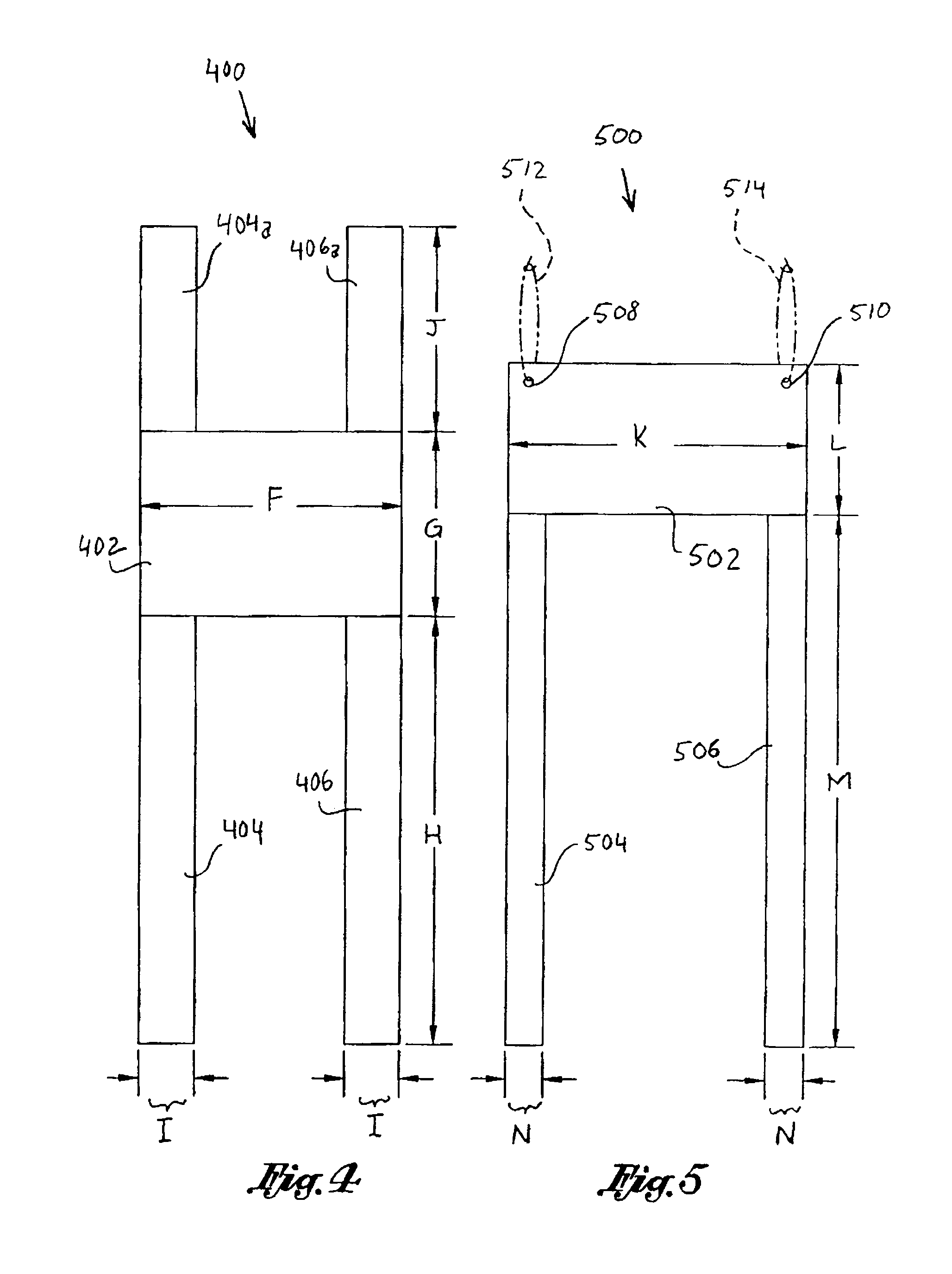Implantable sling for the treatment of incontinence and method of using the same
a technology of incontinence and implants, which is applied in the field of surgical implants for the treatment of male or female incontinence, can solve the problems of incontinence experiencing continuous urine leakage, incontinence changing, and urge incontinence, and achieves the effects of convenient anchoring, less trauma, and less urination
- Summary
- Abstract
- Description
- Claims
- Application Information
AI Technical Summary
Benefits of technology
Problems solved by technology
Method used
Image
Examples
embodiment 400
[0044]Referring now to FIG. 4, there is shown a further embodiment 400 for use in the surgical treatment of male urinary incontinence. As depicted, the implant 400 includes a support portion 402 with first and second anchor portions 404, 406 depending therefrom in generally parallel relation to one another and additional anchor portions 404a, 406a, ascending therefrom to define an “H” shape. The implant 400, as depicted, is preferably formed such that support portion 402 has a width “F” of approximately 7 cm and a height “G” of approximately 5 cm. Anchor portions 404, 406 preferably have a length “H” of approximately 30 cm and a width “I” of 1 cm. Additional anchor portions 404a, 406a will have a width of approximately 1.5 cm and a height “J” of approximately 14 cm, and may preferably be formed as extensions of 404 and 406, respectively. Again, such dimensions can be varied as may be deemed appropriate by one skilled in the art. Specifically, it should be understood that the specifi...
embodiment 600
[0056]To implant such embodiment 600, a vertical perineal incision is made in the midline dissecting to expose the bulbar urethra and the inferior aspect of the descending rami bilaterally while the patient assumes a lithotomy position. A suitable introducer is passed from outside in or inside out through a 3 cm groin incision that is chosen with the finger in the initial perineal incision to pass through the obturator foramen. A respective end 604 or 606 that is attached to the introducer tip and advanced within the perineal incision. The introducer is retracted through the obturator foramen with the respective other end 604 or 606 being grasped at the lateral groin incision site and cut at skin level. The opposite end 604 or 606 is carried over the bulbar urethral complex. A second suitable introducer is passed from outside in or inside out through another 3 cm groin incision on the contra-lateral side and the process is repeated. The respective ends 604 and 606 of the implant 600...
embodiment 700
[0057]The implant in embodiment 700 depicted in FIG. 7 assumes a generally rectangular configuration having a width “Q” of 4 cm and a height “R” of 3 cm. In accordance with the other embodiments, the implant is preferably secured into position by making a vertical perineal incision to the midline dissecting to expose the bulbar urethra and the inferior aspect of the descending rami bilaterally while the patient assumes a lithotomy position. A suture secured on a UR-6 needle is then used to bite into the periosteum of the descending rami bilaterally. Although not shown, there will be four sutures altogether on each side for a total of 8 secured knots to fix the implant 700 into position. The lower three sutures on one side are threaded through the implant, which is placed as high as possible on the bulbar urethral complex. Such lower three sutures are loosely held to stabilize the sling and the top apical suture is then placed, one on each side at the junction of the descending rami ...
PUM
 Login to View More
Login to View More Abstract
Description
Claims
Application Information
 Login to View More
Login to View More - R&D
- Intellectual Property
- Life Sciences
- Materials
- Tech Scout
- Unparalleled Data Quality
- Higher Quality Content
- 60% Fewer Hallucinations
Browse by: Latest US Patents, China's latest patents, Technical Efficacy Thesaurus, Application Domain, Technology Topic, Popular Technical Reports.
© 2025 PatSnap. All rights reserved.Legal|Privacy policy|Modern Slavery Act Transparency Statement|Sitemap|About US| Contact US: help@patsnap.com



